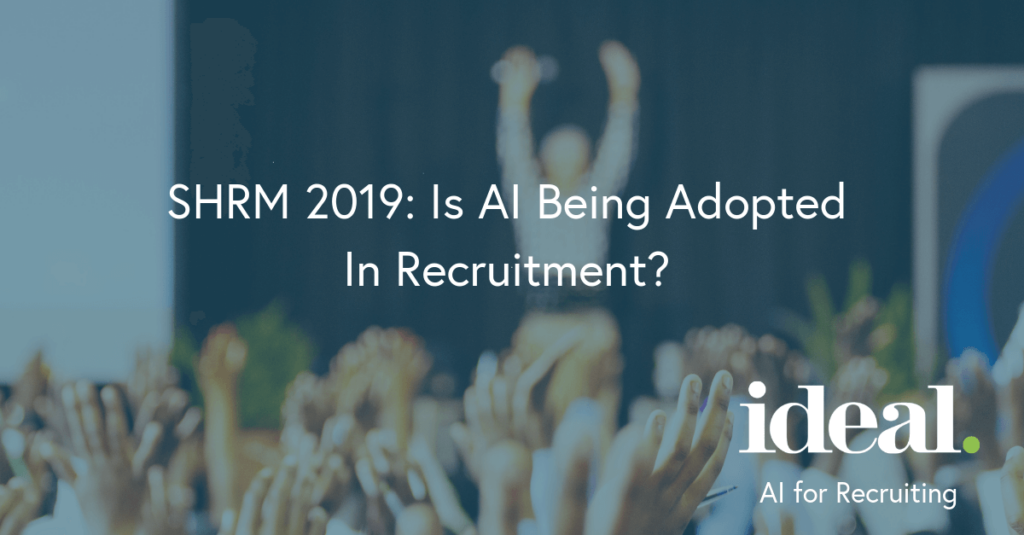Have you been curious to hear about the discussions surround AI in HR that came out of SHRM’s annual conference?

SHRM’s annual conference just wrapped up in Las Vegas, and as predicted, AI was a big theme for both vendors and the HR professionals attending. (Here’s a Twitter search stream of #SHRM19 AI references, with some interesting charts and visuals throughout.)
Per one presentation, AI is currently deployed by only about 6% of HR departments, although a sizable chunk of talent acquisition teams are researching and looking more into it.
There were a few good discussions on the ultimate purpose for AI in HR and recruiting functions, with one of the best summed up by Gemma Toth: “AI should make you more available to your employees (and candidates).”
AI can help recruiting teams in a lot of ways, but that’s the core essence of it: It saves you time and makes you more available. The numbers vary in different studies, but generally somewhere between 50-65% of a recruiter’s time goes to “non-value-add” activities, such as scheduling and rescheduling, manual paperwork, and other rote tasks. It’s hard to be impactful at that level. Prioritization and focusing on high-value tasks is the best way to drastically improve efficiency.
The Eisenhower Matrix
You’re likely familiar with Dwight Eisenhower. He was a respected general in World War II, then served as President of the United States for eight years. (Actually, the summer 1956 Dartmouth conference considered to be a founding event in artificial intelligence happened during his Presidency.)
Eisenhower has another concept tied to him: “The Eisenhower Matrix,” or a way to think about time management. It’s sometimes called “The Urgent-Important Matrix.” Visually:
You can map those quadrants here:
Combine the two and:
- If something is important and urgent, do it now.
- If something is important but less urgent, schedule it.
- If something is urgent but less important, delegate it.
- If something is less urgent and less important, don’t do it right now.
How does the Eisenhower Matrix intersect with AI for recruiting?
We want recruiters to be mostly in that top left quadrant, prioritizing work that is important and urgent. That would mean establishing relationships with candidates, building pipelines, building relationships with hiring managers, capacity planning, and broader strategy. All those things will help the business grow successfully.
But where a recruiter’s time often gets sucked away is in the top right and bottom left quadrants: important but less urgent or urgent but less important. That’s where much rote task work can lie. To be clear: we’re not saying these things don’t need to be done, but rather there is better ways to do them.
You can save time in those quadrants by using technology, such as screening tools, chatbots for non-essential FAQ-style communications, and intelligent automation.
The core issue for most recruiters is time, especially in high-growth companies. It seems there’s never enough time to get it all done, and recruiters consistently say this.
Well, it’s time to channel the man who strategized the storming of Normady’s beaches — and focus on what’s important and urgent for your business. But to get time back into that quadrant, you need to automate and get help from technology on some of the tasks in other quadrants. As more and more recruiting teams see the beauty and the power in that, the 6% number from SHRM will only continue to rise.
Using AI to automate and increase efficiencies in the top part of the funnel is crucial, and adoption among companies will skyrocket in the years to come. Ask yourself: when are you going to implement these software’s?